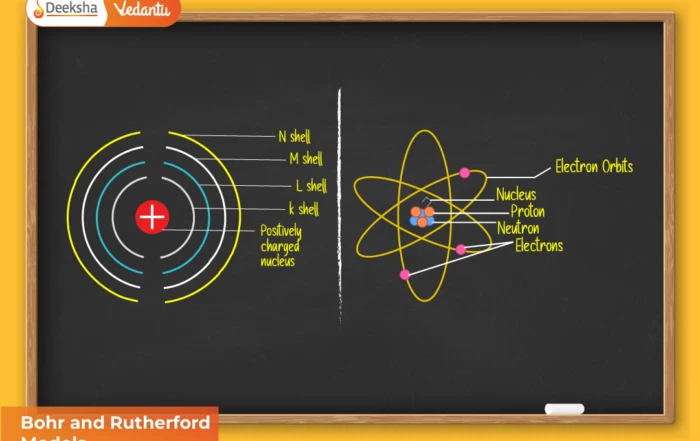The journey toward organising the elements into a meaningful and scientific system did not happen overnight. Early chemists struggled to find patterns among the numerous known elements, and their efforts gradually shaped the foundation of the modern periodic table. This topic explores how the classification evolved from scattered observations to a structured and systematic arrangement.
Early Attempts at Element Classification
Before modern chemistry took shape, only a handful of elements were known, and most of them—such as gold, silver, and copper—were identified based on their physical properties. As scientific knowledge expanded and more elements were discovered, it became increasingly difficult to study them individually. Chemists needed a systematic way to group elements so they could understand their properties, behaviour, and relationships.
Early attempts focused primarily on broad physical characteristics. Elements were grouped as metals and non-metals, but this distinction was too simplistic. As new patterns emerged, more refined classifications became necessary.
Dobereiner’s Triads
One of the first scientific attempts to classify elements based on their properties came from Johann Wolfgang Döbereiner in the early 19th century. He identified groups of three elements, which he called triads. These elements shared similar chemical properties and showed a clear numerical pattern.
Below is a table showcasing examples of Döbereiner’s triads:
| Triad | Elements | Key Observation |
| Alkali Metal Triad | Lithium (Li), Sodium (Na), Potassium (K) | The atomic mass of Sodium lies approximately midway between Lithium and Potassium. |
| Alkaline Earth Triad | Calcium (Ca), Strontium (Sr), Barium (Ba) | Strontium’s atomic mass is roughly the average of Calcium and Barium. |
| Halogen Triad | Chlorine (Cl), Bromine (Br), Iodine (I) | Bromine’s atomic mass lies between Chlorine and Iodine. |
Döbereiner’s work hinted that atomic masses and chemical properties might be connected, but it was limited because only a few elements fit into such triads.
Newlands’ Law of Octaves
In 1866, John Newlands noticed a different pattern. He arranged the known elements in increasing order of atomic mass and observed that every eighth element had properties similar to the first—much like the octaves in music. This became known as the Law of Octaves.
Here is a simple representation of Newlands’ Octaves:
| Octave Number | Series of Elements | Observation |
| 1st Octave | H, Li, Be, B, C, N, O | Properties of hydrogen resembled those of fluorine, completing the “octave” cycle. |
| 2nd Octave | F, Na, Mg, Al, Si, P, S | Sodium’s properties were similar to Fluorine, showing the 8th-element repetition pattern. |
| 3rd Octave | Cl, K, Ca, … | Similar repetitions were noted initially but became inconsistent for heavier elements. |
Although this approach worked fairly well for lighter elements, it failed when new elements were discovered. Newlands’ arrangement could not accommodate unknown elements, and his work was initially rejected by the scientific community.
Mendeleev’s Periodic Table — The Breakthrough
Among all early contributors, Dmitri Mendeleev made the most significant leap in periodic classification. In 1869, he arranged the known elements in increasing order of atomic mass, placing those with similar chemical properties in the same groups (vertical columns).
A simplified representation of Mendeleev’s organisation is given below:
| Feature | Description |
| Basis of Arrangement | Increasing atomic mass |
| Groups | Elements with similar properties were placed in the same vertical column. |
| Gaps in the Table | Mendeleev boldly left empty spaces for elements yet to be discovered, predicting their properties accurately. |
| Strength of the Model | Allowed corrections in atomic masses and predicted new elements like Germanium and Gallium. |
Mendeleev’s insight that the properties of elements are periodic functions of their atomic masses provided the first strong scientific basis for element classification. His predictions were later confirmed when the missing elements were discovered, proving his table to be remarkably accurate.
From Early Systems to the Modern Periodic Table
While the early attempts—Triads, Octaves, and Mendeleev’s table—each had limitations, they paved the way for the modern periodic table. Today’s periodic table is arranged based on atomic number rather than atomic mass, thanks to Henry Moseley’s work. This corrected inconsistencies and established a more accurate periodic law.
The evolution of periodic classification shows how scientific ideas grow over time, with each discovery building on previous attempts. Understanding this history not only helps students appreciate the modern periodic table but also highlights the importance of observation, prediction, and continuous refinement in science.
FAQs
Q1: What is the genesis of periodic classification?
The genesis of periodic classification refers to the historical development of methods used to group and organise elements based on their properties, starting from early attempts like triads to the formulation of the modern periodic table.
Q2: What was Dobereiner’s contribution to element classification?
Dobereiner introduced triads—groups of three elements with similar chemical properties where the atomic mass of the middle element was approximately the average of the other two.
Q3: What is Newlands’ Law of Octaves?
Newlands’ Law of Octaves states that when elements are arranged in increasing order of atomic mass, every eighth element has properties similar to the first, resembling musical octaves.
Q4: Why is Mendeleev’s periodic table important?
Mendeleev’s periodic table is important because it systematically arranged elements by atomic mass, grouped similar elements together, and even predicted the existence and properties of undiscovered elements.
Q5: How did the modern periodic table evolve from Mendeleev’s table?
The modern periodic table uses atomic number instead of atomic mass as its basis, thanks to Henry Moseley’s work, correcting earlier inconsistencies and forming the basis of the modern periodic law.
Conclusion
The genesis of periodic classification reflects a long journey of scientific discovery. Early attempts—like Döbereiner’s Triads and Newlands’ Octaves—revealed recurring patterns among elements, while Mendeleev’s periodic table provided a structured approach that transformed chemistry. Each step contributed to the creation of the modern periodic table, which today stands as a cornerstone of chemical science.











Get Social